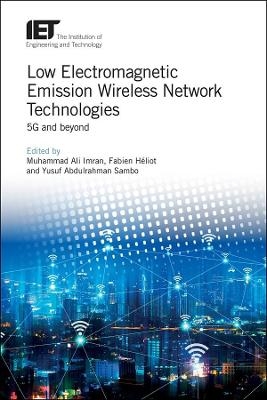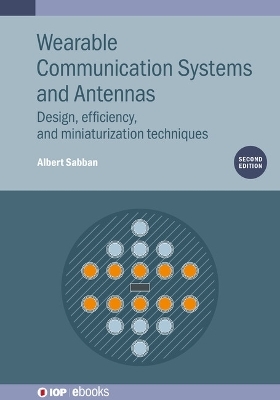
Low Electromagnetic Emission Wireless Network Technologies
Institution of Engineering and Technology (Verlag)
978-1-78561-848-2 (ISBN)
This book focuses on innovative EMF exposure research for future generations of mobile and wireless communications. This timely publication highlights the novel work done on reducing EMF emissions in future mobile communication systems and how to develop smart integrated technical solutions.
Muhammad Ali Imran is the Vice Dean of Glasgow College UESTC and Professor of Communication Systems at the School of Engineering, University of Glasgow, UK. He is also an Affiliate Professor at the University of Oklahoma, USA and a Visiting Professor at the 5G Innovation Centre, University of Surrey, UK. Fabien Héliot is currently a Lecturer at the Institute for Communication Systems (ICS), University of Surrey, UK. His main research interests cover energy efficiency, EM exposure reduction, cooperative communication, MIMO, and radio resource management. Yusuf Abdulrahman Sambo is a Research Associate and the 5G-SON testbed lead at the University of Glasgow, UK. His main research interests include EMF exposure reduction, radio resource management, energy efficiency, wireless sensor networks and device-to-device (D2D) communication.
Part I: EMF evaluation and characterisation
Chapter 1: EMF exposure definition, metrics, effects and regulations
Chapter 2: Electromagnetic field (EMF) monitoring tools
Chapter 3: Large-scale EMF characterization considering real network deployments
Chapter 4: EMF exposure in heterogeneous networks environments
Chapter 5: Architecture of public mobile networks and its impact on EMF exposure
Part II: EMF reduction techniques
Chapter 6: EMF emission-aware resource allocation for uplink OFDM systems
Chapter 7: Multicell uplink scheduling for EMF emission minimization in OFDMA systems
Chapter 8: EMF: RF device end of things - low-exposure user terminal radio design concepts
Chapter 9: Millimetre-wave flexible wearable antenna design and challenges for 5G and beyond
Chapter 10: Reducing EMF emissions in ultra-reliable low-latency communications with HARQ
Chapter 11: Reducing EMF via energy-efficient inter-frequency small cell discovery
Chapter 12: Conclusion and future perspectives
| Erscheinungsdatum | 03.01.2020 |
|---|---|
| Reihe/Serie | Telecommunications |
| Verlagsort | Stevenage |
| Sprache | englisch |
| Maße | 156 x 234 mm |
| Themenwelt | Technik ► Nachrichtentechnik |
| ISBN-10 | 1-78561-848-2 / 1785618482 |
| ISBN-13 | 978-1-78561-848-2 / 9781785618482 |
| Zustand | Neuware |
| Informationen gemäß Produktsicherheitsverordnung (GPSR) | |
| Haben Sie eine Frage zum Produkt? |
aus dem Bereich


